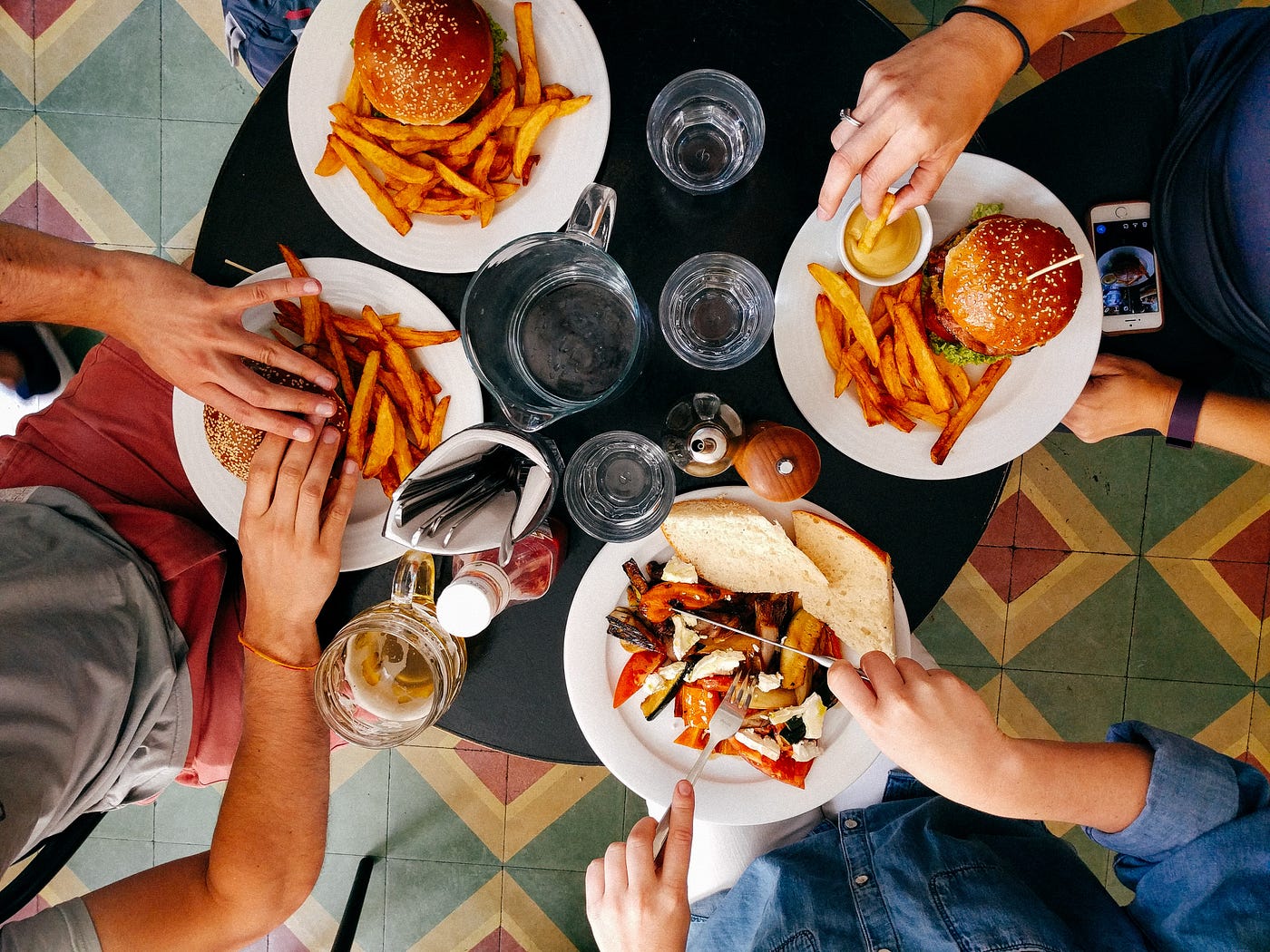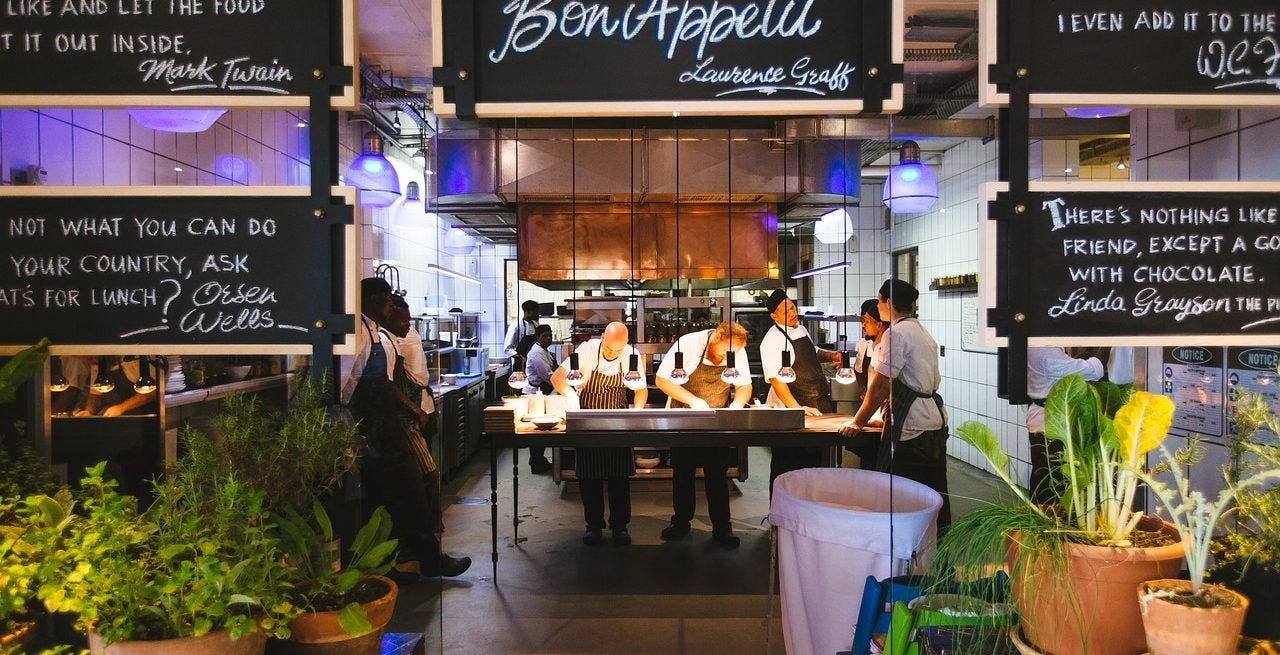6 Strategies for Green Building and Interior Design of Restaurants | Aug 5th, 2020
Photo by kayleigh harrington on Unsplash
- Many global brands in the food and beverage industry have joined in on the international trend toward green building. […] Although more consumers than ever before consider a company’s environmental policies before making purchases, sustainable design architecture is more than just a marketing ploy to highlight a company’s commitment toward protecting the Earth.
- Here are six sustainable design architecture strategies to help you get started with green building.
- Get the Indoor Air Right
- Build on a Sustainable Site
- Source Sustainable Materials
- Cut Your Water Use
- Learn With LEED
- Control Your Kitchen
- Working with professional consultants, it is possible to follow best practices and brainstorm unique ideas that not only better position your brand among customers who care about the environment, but also directly contribute to environmental sustainability efforts.

Many global brands in the food and beverage industry have joined in on the international trend toward green building. Many others are looking to decrease their carbon footprints and increase their competitive positions by following suit.
Although more consumers than ever before consider a company’s environmental policies before making purchases, sustainable design architecture is more than just a marketing ploy to highlight a company’s commitment toward protecting the Earth. Restaurants and other food and beverage facilities can benefit from a large variety of improvements in building and interior design that help to reduce negative impacts on the environment and cut unnecessary building expenses in measurable, meaningful ways.
Here, we’ll cover six sustainable design architecture strategies to help you get started with green building.
Get the Indoor Air Right
How many times has someone at a table asked for a manager to turn down the air conditioning in a restaurant? Excessively cranking the cold is a bad habit that negatively impacts customer satisfaction and wastes money and energy. Luckily, some best practices will help you track and reduce your facility’s waste from air conditioning use where possible:
- Ensure building maintenance regularly changes air filters.
- Consider upgrades to the air conditioning unit and control systems. Check for outdated parts, proper humidity levels, and working ventilation when doing so.
- Look for high-efficiency machines that will save money in monthly energy costs in the long run.
Build on a Sustainable Site
Before you build your new restaurant facility, make sure to conduct an environmental impact study with an independent engineering firm on whatever piece of land you’re considering.
Certain places are considered environmentally sensitive; look for endangered or threatened plants and wildlife. You should also be able to prove that your building will not negatively impact surrounding bodies of water or local air quality.
While many cities throughout the world mandate building on sustainable sites, many others do not. However, it would be a major communications crisis if you discovered environmental issues after you broke ground. Considering and investigating these factors ahead of time will save you enormous expenses in the long run.

“Under” Designed by Snøhetta, photo by Ivar Kvaal
Source Sustainable Materials
Once you begin construction, you’ll want to make sure that your building materials are sourced from sustainable materials:
- Use recycled or reused items as much as possible; steer clear of exotic woods or cheap plywood.
- Take a critical look at your food service items; shift away from disposable plastics and use compostable materials instead.
- Phase out plastic straws or use more sustainable options like paper straws.
- Install energy-efficient hand dryers in bathrooms instead of stocking paper towels.
- Use motion-sensor lights for less-used areas.
- Use LED light bulbs.
- Consider installing solar panels.
While sustainable options often come with expensive up-front price tags, they often pay for themselves in the long run. Some sustainability options also help you recoup costs from the start — such as using cloth napkins instead of paper napkins.
Cut Your Water Use
Water conservation is another factor to address when committing to green building and design strategies in your restaurant. Ideas for saving water inside include:
- Installing aerators and automatic faucets in the bathrooms
- Training employees to wash full racks only
- Adding a foot pedal to hand washing sinks for employees
- Using a filtered glass filler for times when customers specifically request water
- Conducting a monthly inventory to check for defects like a leaky faucet
Even small design choices help. For instance, you can make a measurable difference by choosing the right plants and placing them in areas where they would require less watering. For instance, if a restaurant is located in a tropical climate, it doesn’t make sense to plant delicate flowers that need extra water to survive. Work with a knowledgeable landscape architect to save money and water.
Learn With LEED
Decision-makers, architects, and stakeholders can look to the LEED certification program to get some starter ideas for green architecture and design practices. An acronym for “Leadership in Energy and Environmental Design,” LEED is an international program that helps guide restaurants to be more energy efficient and environmentally responsible.
Although the LEED program takes a sizable amount of time and work to complete, it’s an excellent educational resource to help businesses in the food and beverage industry that are looking to go green get started.
Food waste warriors: The zero waste restaurant — Silo, Brighton by
Thomson Reuters Foundation
Control Your Kitchen
While not directly outlined in the LEED certification requirements, restaurant facilities have extra opportunities to reduce their ecological footprints in meaningful ways:
- Create policies that incorporate mandates such as recycling food and beverage packaging — like plastic or glass bottles.
- Sell old or broken pieces of equipment to companies that specialize in reuse or recycling.
- When purchasing new items for the kitchen, check the Energy Star rating for efficiency. This rating is especially important for refrigeration and ovens.
- Train your staff in water consumption and proper cookware selection — choosing a properly sized pan can prevent wasted heat energy by up to 40%.
Importantly, take charge of your food waste. Restaurants throw away up to 10% of the food purchased for their inventories. And it adds up. Billions of pounds of food and organic waste can be saved from the landfill by implementing composting programs. Your brand could even partner with local community gardens for an effective and impactful marketing opportunity.

Why Are Sustainable Restaurants Important? by Matthew S. Hollis
Need Guidance on These Strategies?
Even globally recognized brands in the food and beverage industry can greatly benefit from the help of professional consultants to support their transition toward green building and design. Miniwiz has more than 15 years of experience working with the top industry leaders, including Michelin 3-star Dominique Crenn’s restaurant in the Salesforce Tower, located in San Francisco, and Le Blé d’Or, one of the best beer producers and restaurateurs in Taiwan, to help reduce waste and improve efficiency.
Working together, it is possible to follow best practices and brainstorm unique ideas that not only better position your brand among customers who care about the environment, but also directly contribute to environmental sustainability efforts.
Contact us today to learn more about our collaborative projects and our methods of creating turnkey solutions for maximizing success while minimizing your impact on the environment.